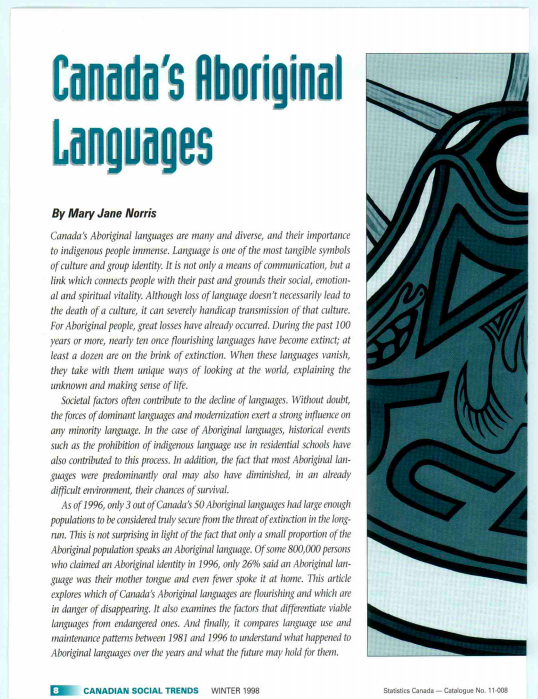Canada's Aboriginal Languages
Norris, writing in 1998, presents an overview of which Aboriginal Languages in Canada appear healthy and which are endangered, along with what factors contribute to language vitality. The paper uses data from 1981 to 1996 to examine language use and maintenance over time. This study recognizes 50 Indigenous languages in Canada under 11 language families. Additionally, Norris employs M. Dale Kinkade’s 1991 study “The Decline of Native Languages in Canada” in order to identify which languages are “already extinct, near extinction, endangered, viable but with a small population base, and viable with a large population.” (9)
From 1980 to 1996 across Canada, the number of people with an Aboriginal mother tongue increased by 24%; however, those using the language at home only increased by 60%, and the latter is more important for the index of continuity, particularly as average age of speaker continues to go up. 1996 data shows North Slavey with a mother tongue population of just 290. Norris shows that loss of language use (across Canada) occurs most often when youth leave the home and enter the workforce, particularly when entering large, urban environments. This is particularly true for women, for no immediately clear reason.
Access this Resource:
Norris' paper is available from Statistics Canada, and has also been uploaded on several University websites.
Norris, Mary Jane. “Canada’s Aboriginal Languages.” Canadian Social Trends. Statistics Canada Catalogue no. 11-008 (1998): 8-17.
Additional Info
- Publication Type: Journal Article
- In Publication: Canadian Social Trends
- Keywords: Language




 Phone: 867-374-4040
Phone: 867-374-4040 Email:
Email: